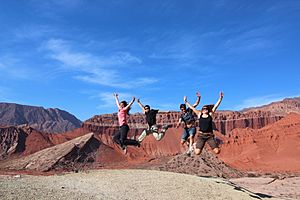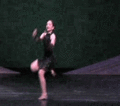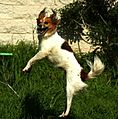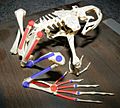Jumping facts for kids
Jumping is a form of movement in which an organism propels itself through the air along a ballistic trajectory. Jumping can be distinguished from running, galloping and other gaits in which the entire body is temporarily airborne by the relatively long duration.
Some animals, such as the kangaroo, employ jumping as their primary form of locomotion, while others, such as frogs, use it only as a means to escape predators. Jumping is also a key feature of various activities and sports, including the long jump, high jump, and show jumping.
Classification
One way to classify jumping is by the manner of foot transfer. In this classification system, five basic jumping forms are distinguished:
- Jump - jumping from and landing on two feet
- Hop - jumping from one foot and landing on the same foot
- Leap - jumping from one foot and landing on the other foot
- Assemble - jumping from one foot and landing on two feet
- Sissonne - jumping from two feet and landing on one foot
- Bound - a leap onward or upward
Images for kids
-
A roe deer exhibiting jumping locomotion, Wadden Sea National Parks
-
Jumping bottlenose dolphin
-
A bullfrog skeleton, showing elongate limb bones and extra joints. Red marks indicate bones substantially elongated in frogs, and joints that have become mobile. Blue indicates joints and bones that have not been modified, or are only somewhat elongated.
See also
 In Spanish: Salto (locomoción) para niños
In Spanish: Salto (locomoción) para niños









